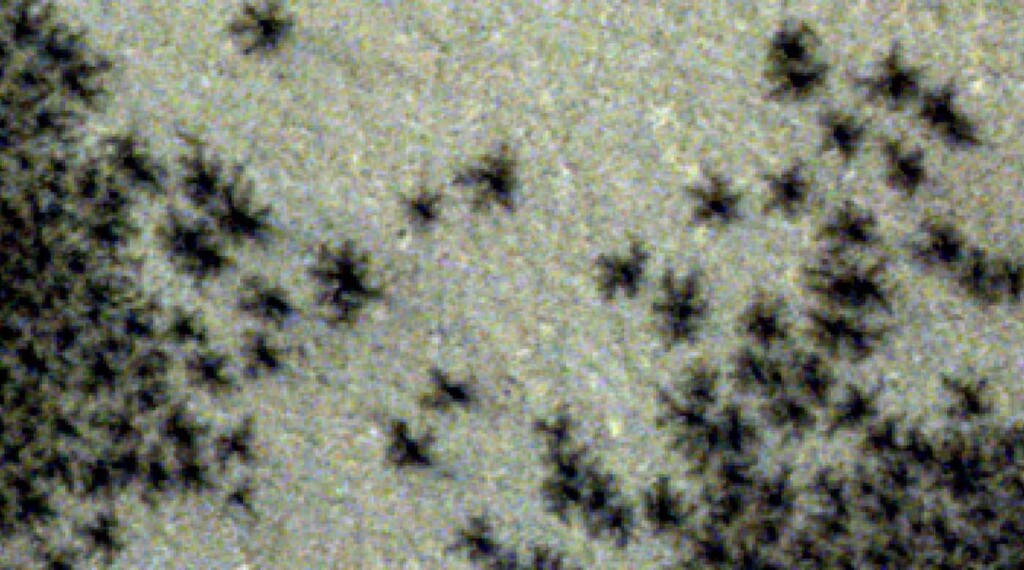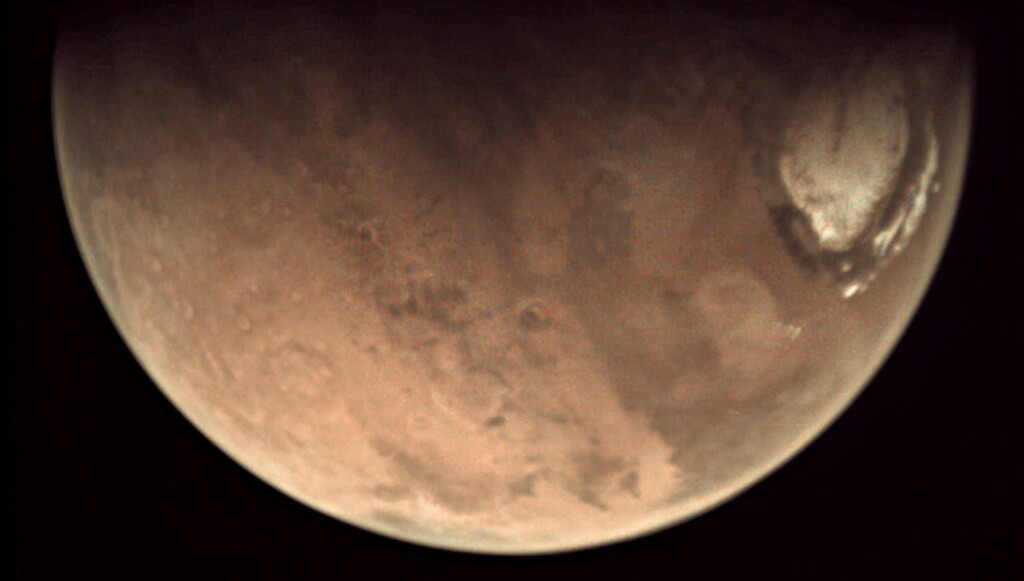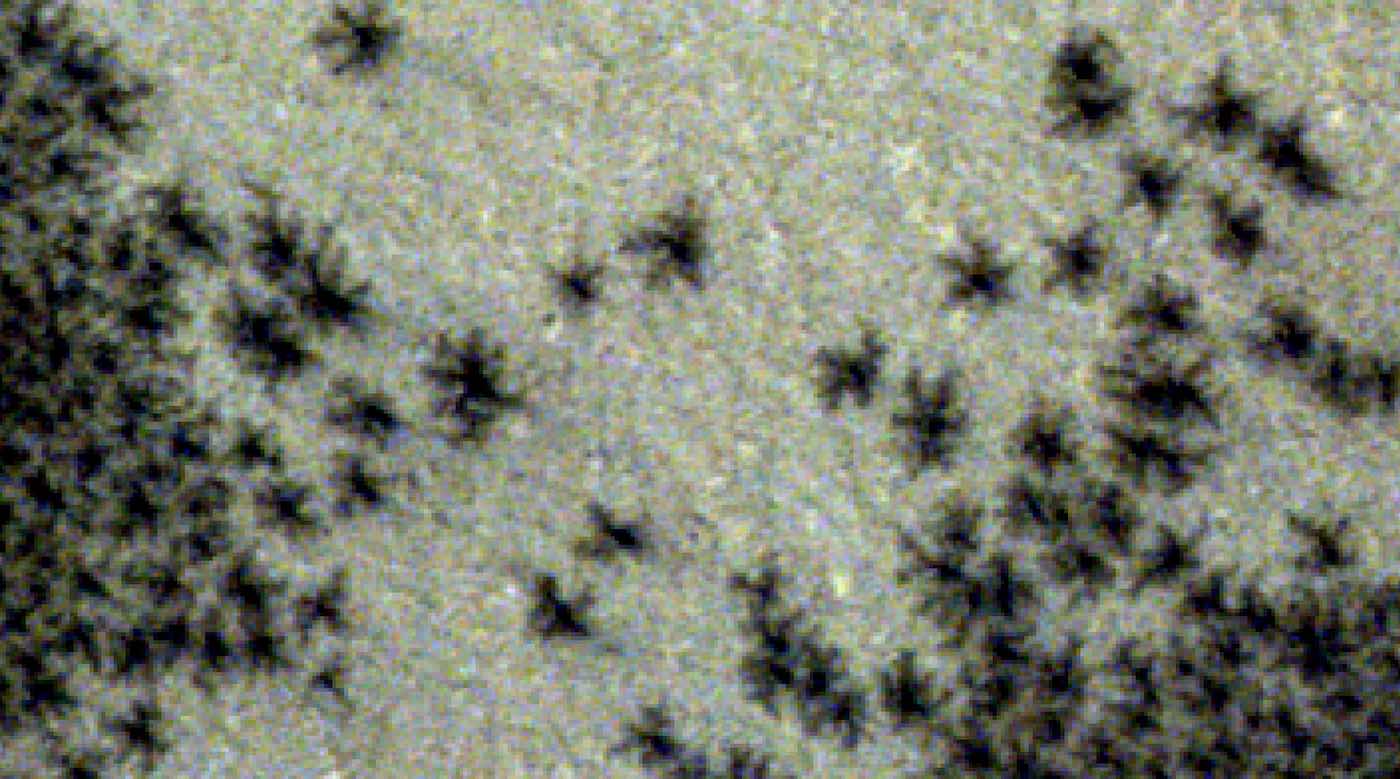
David Bowie would love this! There are spiders from Mars—if you believe these photos.
Incredible images taken by the European Space Agency’s spacecraft, the Mars Express and ExoMars Trace Gas Orbiter (TGO), shows distinctive arachnid shapes.
The apparent creepy crawlies are actually small, dark features that form when spring sunshine falls on layers of carbon dioxide deposited over Red Planet’s dark winter months.
The phenomenon was viewed at the outskirts of a part of Mars nicknamed Inca City in the southern polar region, named because as the linear, almost geometric network of ridges reminiscent of Inca ruins.
“The sunlight causes carbon dioxide ice at the bottom of the layer to turn into gas, which subsequently builds up and breaks through slabs of overlying ice,” said the ESA. “The gas bursts free in Martian springtime, dragging dark material up to the surface as it goes and shattering layers of ice up to a meter thick.”
The emerging gas, laden with dark dust, shoots up through cracks in the ice in the form of tall fountains or geysers, before falling back down and settling on the surface. This creates dark spots of between 45 meters and 1 km across.
“This same process creates characteristic ‘spider-shaped’ patterns etched beneath the ice—and so these dark spots are a telltale sign that spiders may be lurking below,” teased the agency in a media release.
LOOK: A Formation That Looks Like a Giant Grizzly Bear Spotted on Mars by NASA Camera

Another ESA Mars explorer, the ExoMars Trace Gas Orbiter (TGO), has imaged the spiders’ tendril-like patterns especially clearly. The spiders captured by TGO lie near, but outside, the region shown in the new Mars Express image.
The Mars Express view shows the dark spots on the surface formed by escaping gas and material, while the TGO perspective also captures the spidery, web-like channels that are carved into the ice below.
Mars Express has revealed a great deal about Mars in the last two decades and counting, like when it peered into the depths of Mars’ own grand canyon to find that water made up as much as 40% of the ground there.
The orbiter continues to image Mars’s surface, map its minerals, explore the composition and circulation of its atmosphere, probe beneath its crust, and study the martian environment.
SEND THIS INTO ORBIT Around Bowie Fans on Social Media By Sharing It…




















